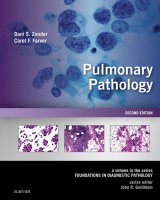Physical Address
304 North Cardinal St.
Dorchester Center, MA 02124

Techniques and Applications Fiber-Optic Bronchoscopy—Fact Sheet Indications for Fiber-Optic Bronchoscopy ▪ Persistent cough ▪ New solitary pulmonary nodule ▪ Persistent chest radiographic infiltrate ▪ Hemoptysis ▪ Bronchial obstruction ▪ Atelectasis ▪ Persistent localized wheezing ▪ Confirmation of abnormal sputum cytology…

Introduction Many systemic diseases are associated with lung or pleural injury, either as a component of the disease itself or as a consequence of other types of injury induced by the disease or its treatment. This chapter focuses on systemic…

Organization of Pleural Effusion Organization of Pleural Effusion—Fact Sheet Definition ▪ Nonspecific repair reaction of an exudative or bloody pleural effusion Clinical Features ▪ Symptoms are related to the primary disease or the presence of fluid and include cough, chest…

Introduction Over 150,000 malignant pleural effusions occur each year in the United States, the majority of which result from pleural involvement by extrapleural malignancies. Although pleural involvement generally occurs at an advanced stage of disease, in some cases symptoms related…

Introduction In contrast to the common pleural metastases from pulmonary and extrapulmonary malignancies, primary tumors of the pleura constitute a relatively rare group of benign and malignant neoplasms, with different pathways of differentiation and histogenesis reflecting the complexity of the…

Benign Mesenchymal Neoplasms Not surprisingly, the lung is a source of virtually all described mesenchymal tumors. Although leiomyomas, schwannomas, lipomas, neurofibromas, hemangiomas, and lymphangiomas can originate in the lung, one should be certain that such lesions are not metastatic low-grade…

Introduction There are several pulmonary diseases discussed elsewhere in this book that, among the many effects they have upon the patient, convey a recognized predisposition to lung cancer development. These diseases include many forms of diffuse pulmonary fibrosis (idiopathic pulmonary…

Introduction Metastases to the lung are the most common malignancy, with incidence ranging from 30% to 55% in various series. This is not surprising because the entire cardiac output and lymphatic fluid produced by the body flow through the pulmonary…

Introduction A variety of uncommon or rare tumors develop in the lung, with incidence rates of 1 in 100,000 people or fewer. For this group of neoplasms, most published accounts take the form of case reports and small series. Given…

Introduction Neuroendocrine neoplasms include a spectrum of malignant neoplasms ranging from relatively low- to intermediate-grade malignancies (typical and atypical carcinoid [AC] tumors) to high-grade malignancies (small cell carcinoma, large cell neuroendocrine carcinoma) and are among the most aggressive primary lung…